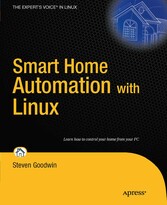Search and Find
Service
"Chapter 5 Communication (S. 149-150)
Humans Talk. Computers Talk.
It is often said that language is the invention that makes all others possible. Within the world of technology, language is the protocol that makes all others live. Writing software for a stand-alone machine is all very nice, but when it manages to interface with the outside world, interface with another program across a network, or control an external piece of hardware, it seems so much more satisfying.
Controlling even the simplest of robots with a computer is infinitely more impressive to the layperson (and many geeks!) than the demonstration of an optimized implementation of marching cubes.1 Having already covered a number of devices in Chapter 1 that are able to talk with external hardware, I’ll now cover human-computer communication and demonstrate how we can interact with one machine or piece of software and have it control another somewhere else. This includes the use of email, SMS, and web pages. However, the onset of new technology is relentless, and with devices such as the iPhone offering a broadband2 experience, its use as a device for voice calls, SMS, or e-mail is very much reduced.
Why Comms?
There are four methods of communication within the technology arena:
• Computer-to-computer
• Human-to-human
• Computer-to-human
• Human-to-computer
These are all important to us for different reasons. The first was covered in Chapter 1 and allows devices to be controlled automatically according to some time- or logic-based programming. Human-to-human communications are those that take place every day but can now be facilitated by technology.
Before the advent of the telephone, our only form of real-time communication was faceto- face. Now we have e-mail, Internet relay chat (IRC), instant messaging (IM), and SMS to perform the same task. All remove the “face” element. We have also streamlined our existing communication mediums. Telephones, which were once low quality and hardwired to a physical location, are now mobile. Through Voice over IP (VoIP) technology, you can make use of the (near) free cost of the Internet to provide financial savings and, when combined with mobile technology, facilitates the amusing situation where using a mobile phone is used to order pizza online through a web page, when it would have been normally used to call them!
When we talk of computer-to-human communication, we are looking at reports and information about the house that the computer sends to us, as appropriate. In the simplest of cases, this might be the daily wake-up call or an e-mail containing the day’s TV schedule. In more complex scenarios, it could be a full report of the computers in the house and how they are performing.3 And finally, human-to-computer communication takes place most often and involves us telling the machine what we want to do via e-mail, SMS, or a web page. To be a truly smart and automated house, this list would include haptic interfaces."
All prices incl. VAT













